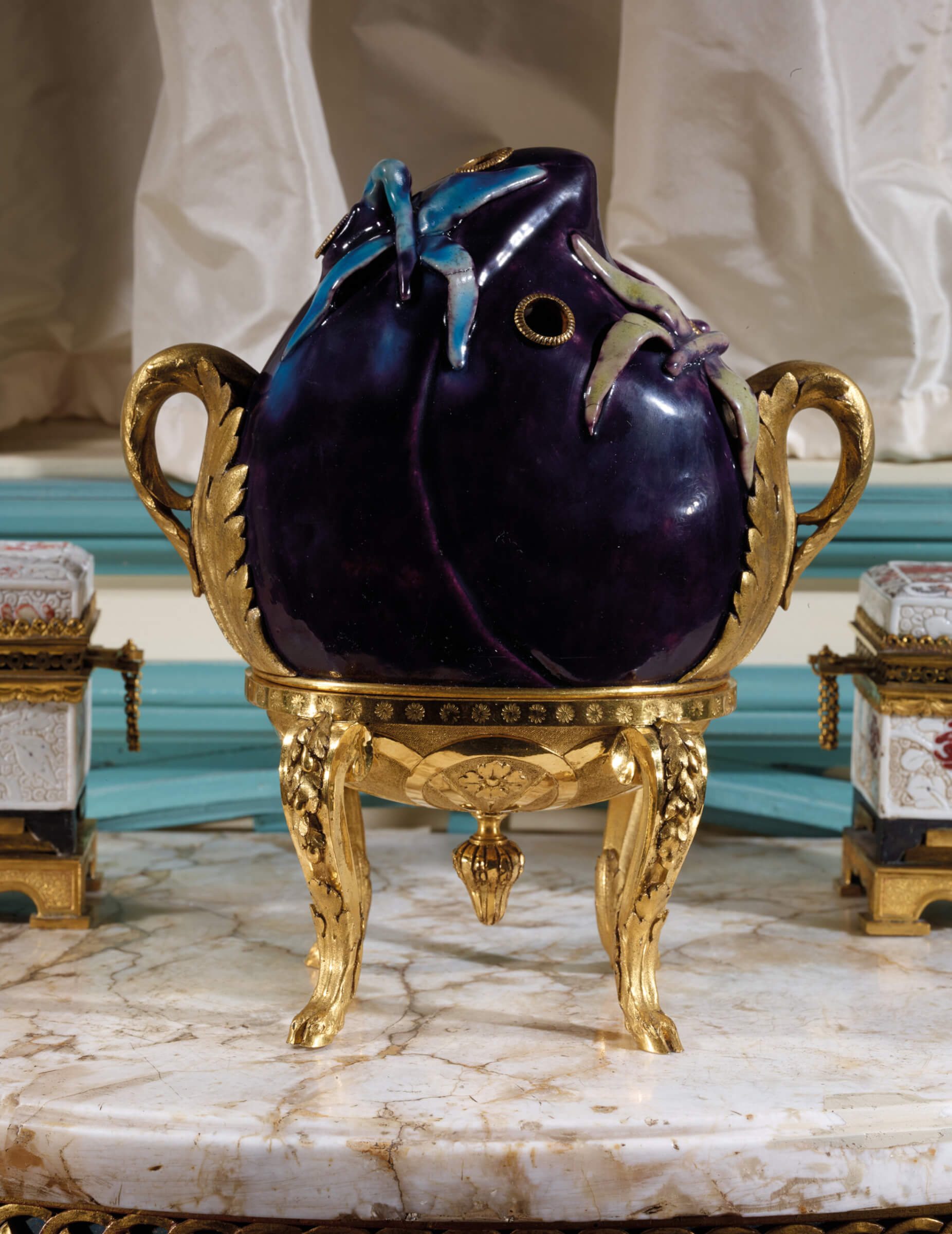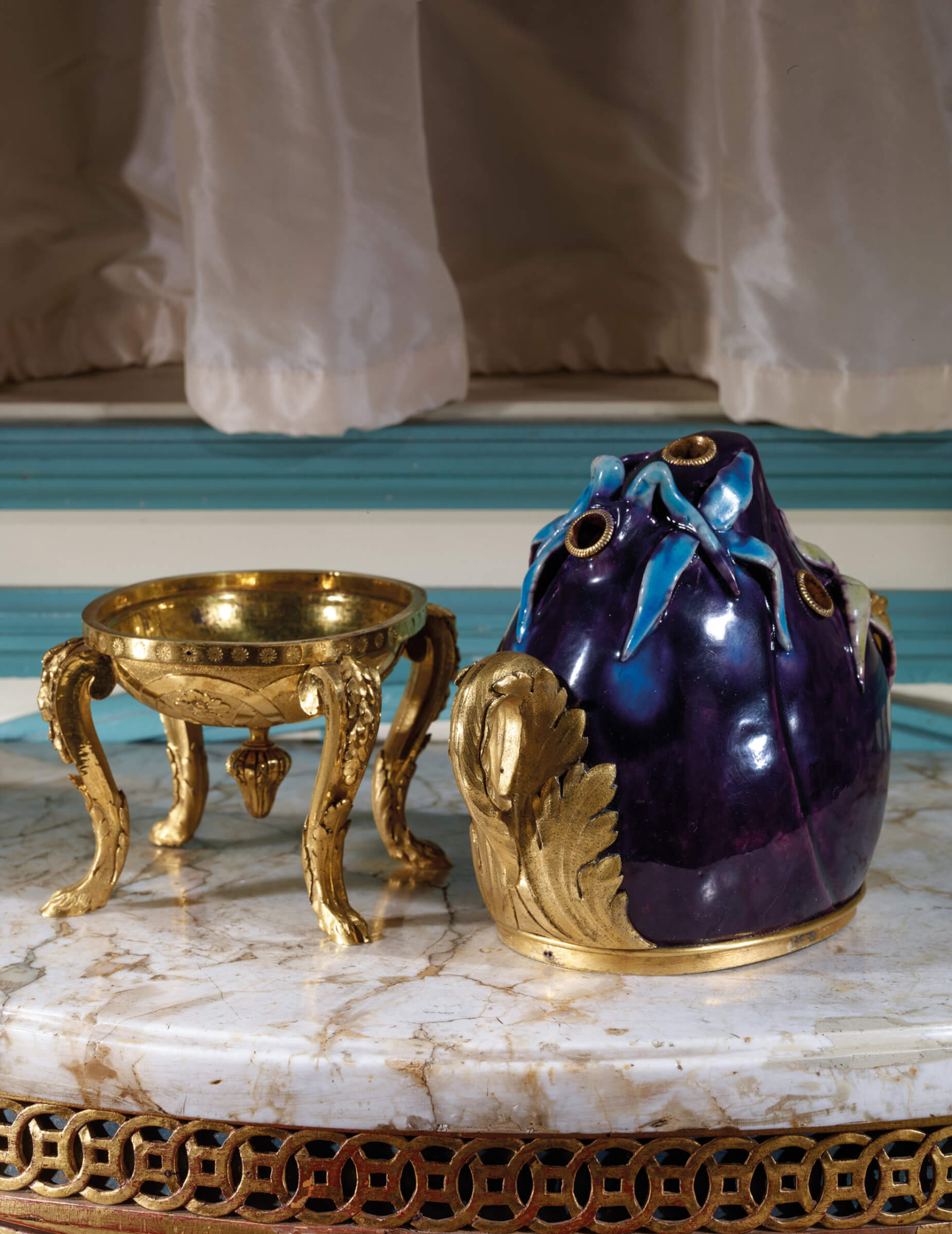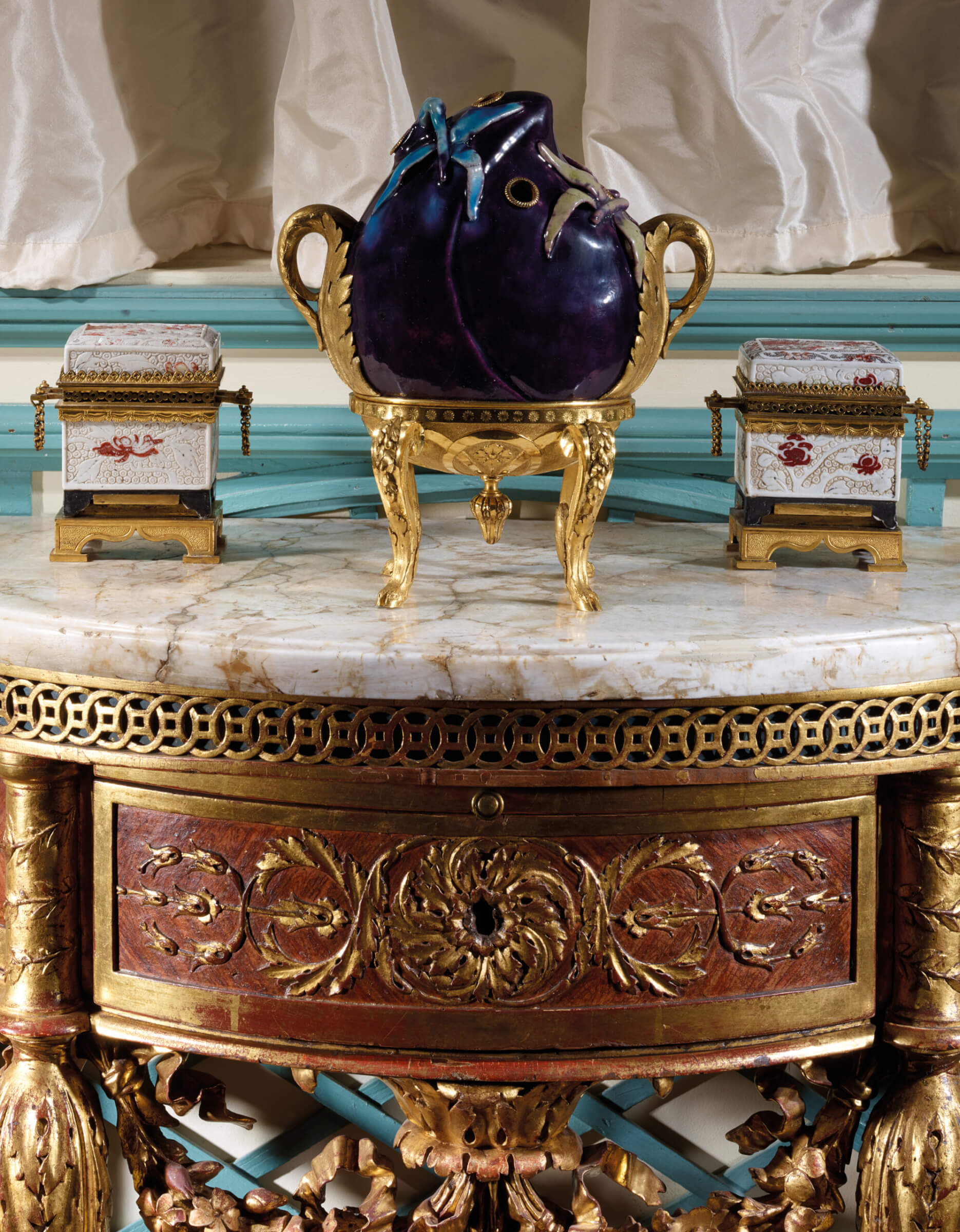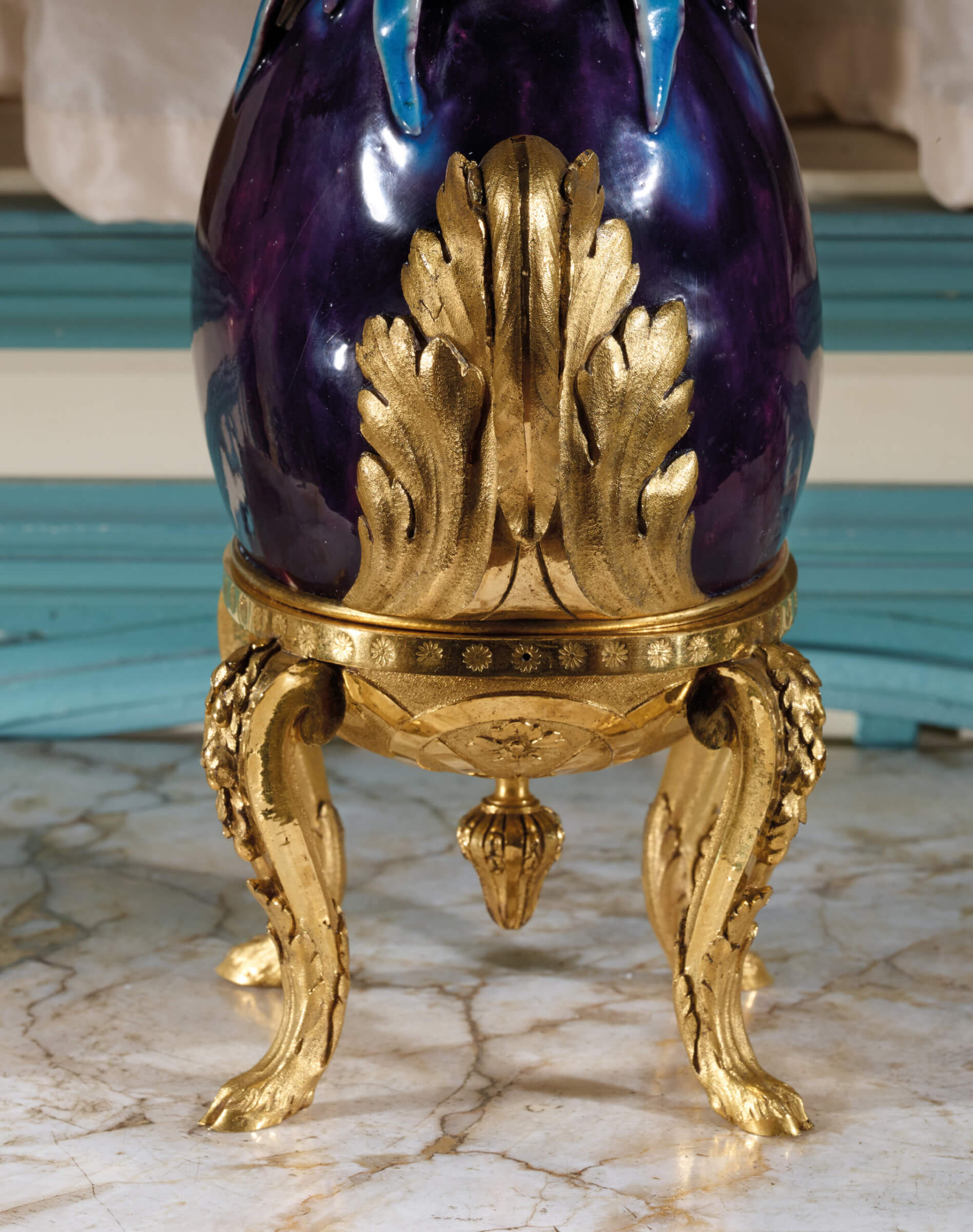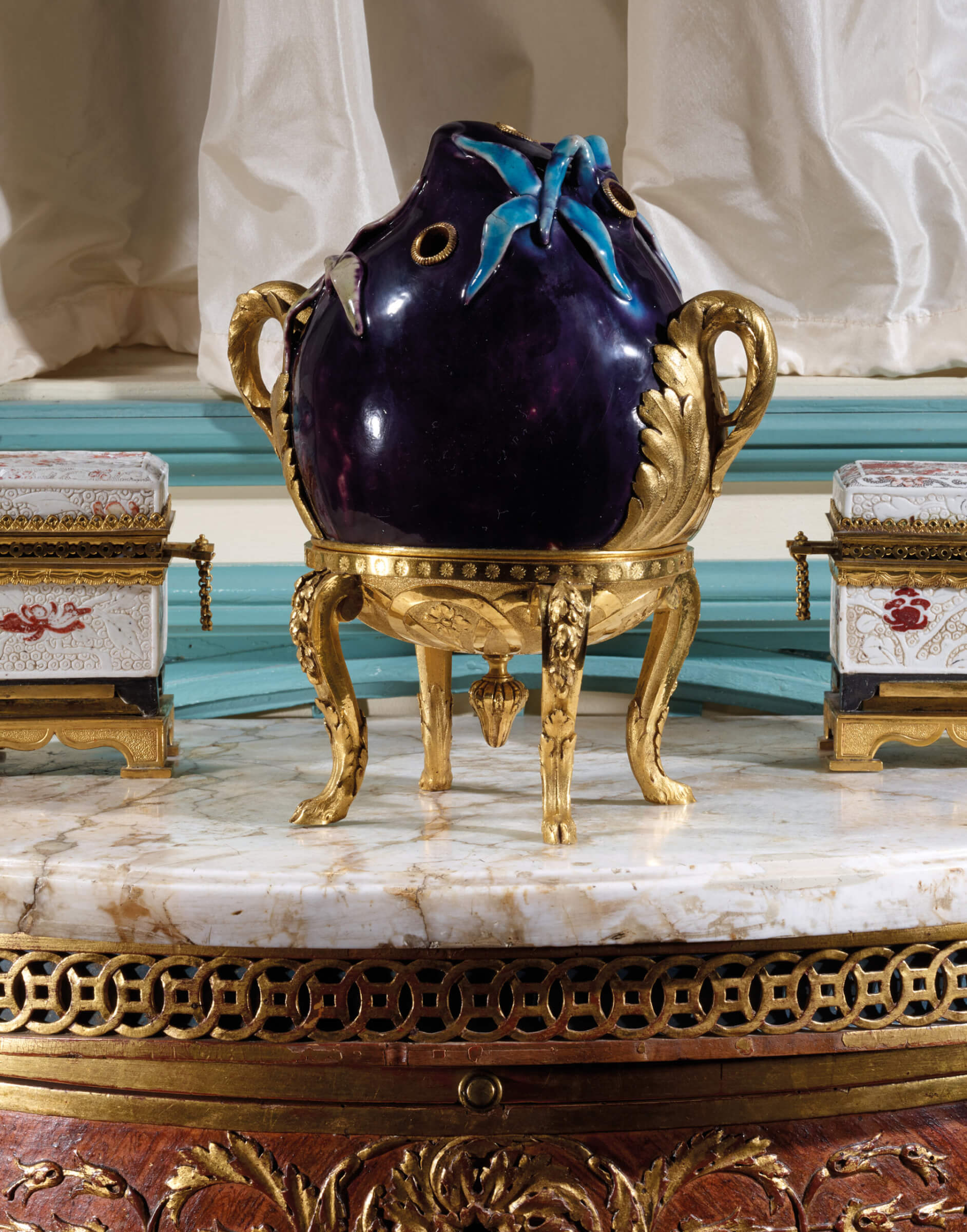

Porcelain with aubergine, turquoise and yellow glaze; mounting in chased and gilt bronze.
H. 21.5 cm. (8 ½ in.); W. 19 cm. (7 ½ in.); D. 10 cm. (4 in.).
PROVENANCE: collection of Louise-Jeanne de Durfort de Duras (1735-1781), Duchess of Mazarin, Mayenne and La Meilleraye, commonly known as the Duchess of Mazarin; her post-mortem auction in Paris, in situ in her hôtel (town house) at 11-13, quai Malaquais, on the site of the current Ecole des Beaux-Arts, under the supervision of Jean-Baptiste-Pierre Lebrun (1748-1813), 10th December 1781, and following days, lot n°. 95; acquired at the auction by Légere, marchand de curiosités in Paris; Rothschild collection.
STATE OF CONSERVATION: this rare Chinese porcelain piece in the shape of an inverted heart, originally a wine jug, has been preserved as it was in the 18th century. It was adapted to ‘European tastes’ around 1770 for the Duchess of Mazarin. It was at that time that it was given an exceptional gilt bronze mount and turned into a pot-pourri. The porcelain has remained intact ever since and the bronzes, with their exceptionally fine chiselling, have retained their original gilding.
This extraordinary pot-pourri, mounted in Chinese porcelain from the Kangxi period (1662-1722) in the shape of a peach, a Chinese symbol of longevity, covered with a lustrous aubergine-coloured glaze and enhanced at the top by a foliage décor enamelled in manganese yellow and turquoise, was part of the collection of Louise-Jeanne de Durfort de Duras (1735-1722), Duchess of Mazarin, Mayenne and La Meilleraye, commonly known as the Duchess of Mazarin. This pot-pourri was fitted with a bronze mount of remarkable chiselling and gilding that can be attributed to Pierre Gouthière (1732-1813), chiseller-gilder to the King.
This porcelain, so rare to be found, was originally a wine pot, known as of the “Cadogan” type in the West. William Cadogan (1675-1726), 1st Earl of Cadogan, was the first person to own such a piece, and he and his wife brought one back to Great Britain, which aroused a great deal of interest. The striking singularity of this pot is that it has no lid. This type of object is known in China as a dao guan hu—literally a wine pot filled upside down—or a “puzzle pot”. One example is now in the collections of the Metropolitan Museum of Art, New York (inv. 79.2.66).
